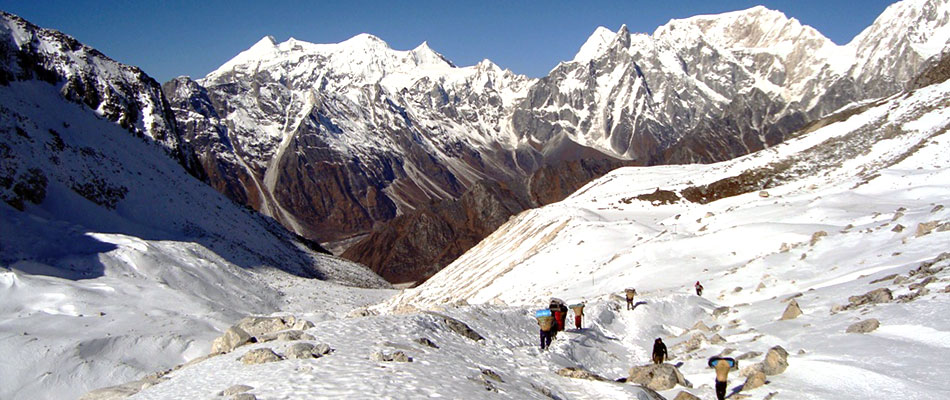Weather information
We offer trekking in Nepal from mid-September to May. However within this period there are clear seasons in the weather. From early September the monsoon rains decrease. By mid-October through to December the weather is usually stable with mild to warm days, cold nights and clear views. Daytime temperatures can reach 25-30 deg C at low altitude in October and nights can drop to below 0 deg C at higher altitudes.
Winter trekking, from December to February, offers cool to mild and clear days with often very cold nights. Daytime temperatures at low altitudes will be mild, around 20 deg C and at night may drop to 0 or as low as -10 deg C at the higher points. Occasionally winter storms can bring snow as low as 2500m.
In March the cold, dry winter season begins to give way to warmer, wetter spring conditions. Mornings are usually clear with cloud build-up occasionally bringing afternoon rainstorms. Daytime temperatures increase quickly in March, with temperatures of up to 30 deg C and mild nights at low altitudes. The increase in rainfall in the hills is more than compensated for by the spectacular displays of rhododendrons and other wildflowers at this time of year. Late spring conditions, as in April and May, are generally hot at low elevations and as the clouds build up to the next monsoon, daily afternoon rainstorms are common. This is a period that generally has clear weather at the higher altitudes and is traditionally a time when mountaineering expeditions commence their ascents.
The monsoon creates a rainy season in Nepal, which lasts from mid-June to mid-September. During this time the Nepal Himalaya is unsuitable for trekking, with the exception of a few remote valleys. We offer treks during this period in Low altitude Treks in the Nepal Himalaya, Tibet & India (Kulu, Ladakh).
The post-monsoon period: From early September the monsoon rain starts to decrease. By mid-October through to mid-December the weather is usually stable with mild to warm days, cold nights and clear views. Daytime temperatures can reach 25-30 degrees Celsius at lower altitudes and decrease as you gain height. Over 3000 meters the daytime temperatures can vary as much as 10 to 20 degrees Celsius, and may be hotter or colder, depending on whether it is sunny or windy etc. At night at lower altitudes, temperatures do not normally drop much, although as you approach November it does get colder and the days shorter. Up high it can drop sharply at night, from 0 to minus 10 or 15 and more when camped on the ice or snow.
The pre-monsoon period:In March the cold, dry winter season begins to give way to warmer, wetter spring conditions. Mornings are usually clear with cloud build-up bringing occasional afternoon rainstorms. Views of the mountains in the middle of the day and afternoon may often be obscured. Daytime temperatures increase quickly in March with temperatures of up to 30 degrees Celsius and mild nights. At higher altitudes it is similar to the conditions of the post-monsoon period, however there is usually more snow, which has accumulated over the winter period. There are spectacular displays of rhododendrons and wildflowers at this time of year. Late spring conditions ie April and May, are generally hot at low elevations and as the clouds build up to the next monsoon, daily afternoon rainstorms are common.


